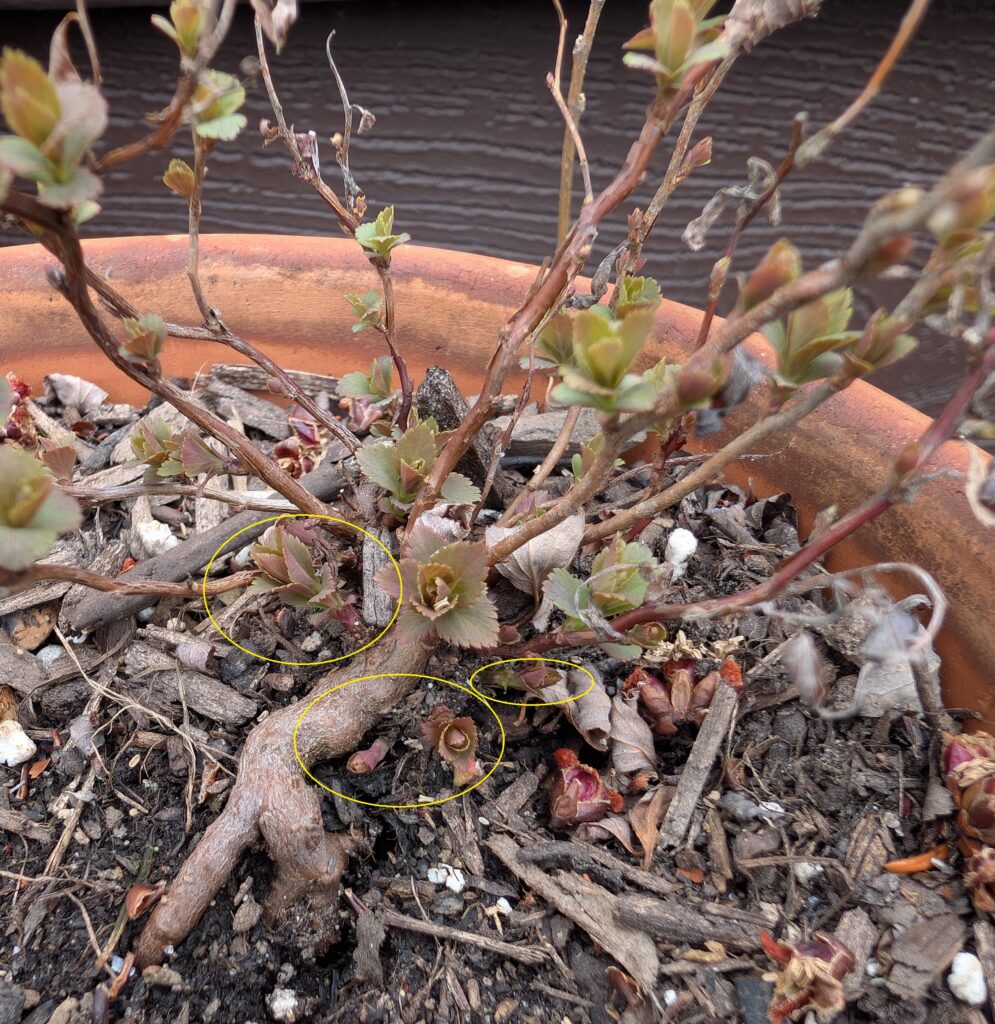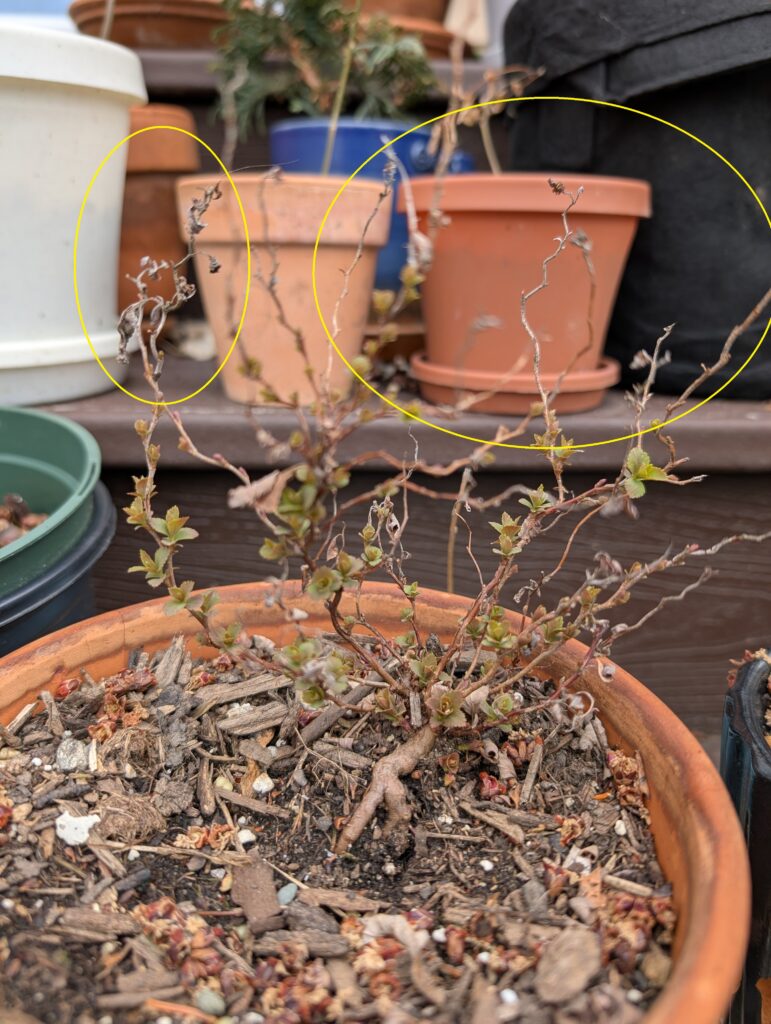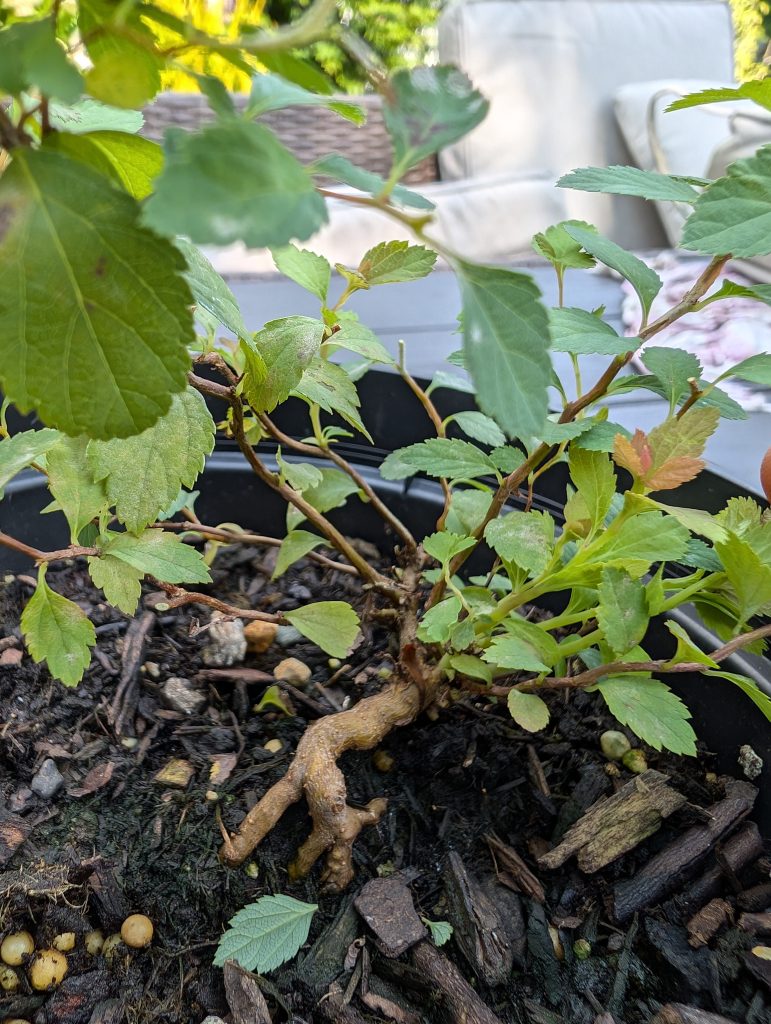- Considerations
- Tree #1 – Year 2
Creating a bonsai from Spiraea Japonica, also known as Japanese spirea, is a captivating yet slightly unconventional choice. Traditionally, bonsai enthusiasts gravitate towards species like juniper, pine, or maple. However, Spiraea Japonica has become an intriguing alternative due to its unique characteristics. Known for its beautiful blooms and vibrant foliage, this deciduous shrub has both beneficial traits and some challenges when it comes to creating a successful bonsai. Let’s explore both the advantages and difficulties of cultivating this lesser-known bonsai tree.
Beneficial Characteristics of Using Spiraea Japonica as Bonsai
Vibrant Blooms and Foliage – One of the most appealing aspects of Spiraea Japonica is its striking flower display. This shrub produces clusters of pink, red, or white flowers in late spring to early summer, making it a visually delightful addition to any bonsai collection. The vibrant, delicate flowers contrast beautifully with the rest of the tree, adding a lively touch.
Beyond its blooms, the foliage of Spiraea Japonica also provides year-round interest. Its leaves range from bright green to yellow, with some varieties featuring bronze or reddish hues in autumn. The seasonal color changes keep the tree visually interesting, even after the flowers fade.
Hardiness and Resilience – Spiraea Japonica is a tough, resilient plant that is cold-hardy in USDA zones 3-8, meaning it can withstand a wide range of climatic conditions. This is beneficial for bonsai artists who live in areas with harsh winters or fluctuating temperatures.
It is also resistant to pests and diseases, making it a low-maintenance bonsai option. Spiraea Japonica can thrive in a variety of soils and doesn’t require constant attention, which makes it a great choice for beginners.
Ease of Pruning and Shaping – Spiraea Japonica responds well to pruning, a key aspect of bonsai cultivation. Its fast growth allows for frequent shaping and trimming, giving the artist the flexibility to develop the tree’s structure over time.
Because of its forgiving nature, this species can be pruned extensively without suffering damage, making it easier to control its size and form. This is especially beneficial for bonsai enthusiasts who enjoy experimenting with different styles.
Challenging Characteristics of Using Spiraea Japonica as Bonsai
Limited Trunk Development – Perhaps the greatest challenge is the limited trunk thickening that Spiraea Japonica offers. While some traditional bonsai species, like pine or juniper, develop a gnarled and aged-looking trunk over time, Spiraea Japonica’s trunk tends to remain thinner and less textured.
Achieving the illusion of an ancient, mature tree is more difficult with this species. You may need to use techniques such as ground planting, air layering, or allowing the tree to grow freely for a few seasons before training it into bonsai form.
Leaf Size and Reduction – One of the main challenges with Spiraea Japonica is the size of its leaves. While smaller than many other deciduous shrubs, its leaves are still larger than what is typically desired in bonsai, particularly in comparison to its trunk and branches. Achieving proper leaf reduction through pruning techniques may take time, and even with regular care, the leaves might not reduce as much as in other species like maples or elms. This can make maintaining the proper scale of a miniature tree more difficult, especially if you’re aiming for a detailed, refined look.
Branch Rigidity and Wiring Difficulty – The branches of Spiraea Japonica can be somewhat rigid, especially as they mature. This makes wiring and shaping more challenging compared to more flexible species like juniper. If you want to achieve intricate or dramatic bonsai styles, such as cascading or windswept forms, you may need to focus on the younger, more pliable branches.
Additionally, once the branches have set, they can be prone to breakage if you try to bend or reshape them, so care is needed when styling the tree.
Seasonal Dormancy and Limited Flowering Period – As a deciduous shrub, Spiraea Japonica will lose its leaves during the winter, leaving behind a bare skeleton. While this dormancy is normal, it might be less appealing to those who prefer evergreen bonsai that provide year-round greenery.
Additionally, while its flowering is a key feature, the bloom period is relatively short. Once the flowers fade, you will need to rely on the foliage for aesthetic interest, which might not be as eye-catching during certain parts of the year.
Conclusion: A Unique and Rewarding Bonsai Species
Creating a bonsai from Spiraea Japonica presents both exciting opportunities and notable challenges. Its vibrant flowers and colorful foliage make it a visually rewarding choice, while its hardiness and low-maintenance requirements make it suitable for a wide range of growers, including beginners. However, challenges like managing leaf size, developing the trunk, and shaping its branches may require more advanced techniques and patience.
Please view the tab at the top of the article to track the progress on my Japanese Spirea!
My Japanese Spirea tree is not much of a tree. I found it growing in a garden bed and liked the sapling’s trunk, so I potted it in 2024. I will track its Year Two progress on this page. First, I want to discuss my overwintering technique.
Overwintering Japanese Spirea
I live in Upstate New York and we had a frigid winter to say the least. We averaged highs of 32 F (0 C)and lows of 18 F (-8 C). As a temperate shrub, I knew I needed to let my spirea experience winter. I had it in a plastic pot in the summer, however, so I thought it needed to be repotted in a sturdier container for the fall/winter.
I swapped the plastic nursery pot for a clay pot. Clay pots are good at absorbing water, which can be a detriment in the hot summer but may be a benefit in the winter so your tree doesn’t end up getting overwatered.
Second, I moved my spirea to my unheated, detached garage. My garage is quite decrepit (lol) and has some drafts but I tried to keep my spirea away from the drafty areas. I also had it somewhat close (10 feet away) from a small window (east-facing). I did make a major gamble and kept it on a shelf (common best practice is to keep trees on the ground) about five feet off the ground. I put a wire mesh over the pot so that mice didn’t burrow in looking for roots or other food.
In terms of watering, I forgot about it from Thanksgiving to about February so it got no water in that time frame. The soil looked really dry when I remembered I had it, so I was afraid I killed it. Still, I only gave it a 2-4 ounces of water. In all, I think I watered it 2-3 times from November to mid-March.
The spirea was the first of my deciduous trees to bud in the spring, so I guess I did something write. I think all the trees I had on the shelf are going to survive, so I will not be as afraid to keep trees on shelves in the winter going forward.
NOTE: You can see in the pictures below that the tips of my shoots did die off. It’s common for this to happen in mature plants, where the tips tend to be flowers.
Plans for 2025 Growing Season



